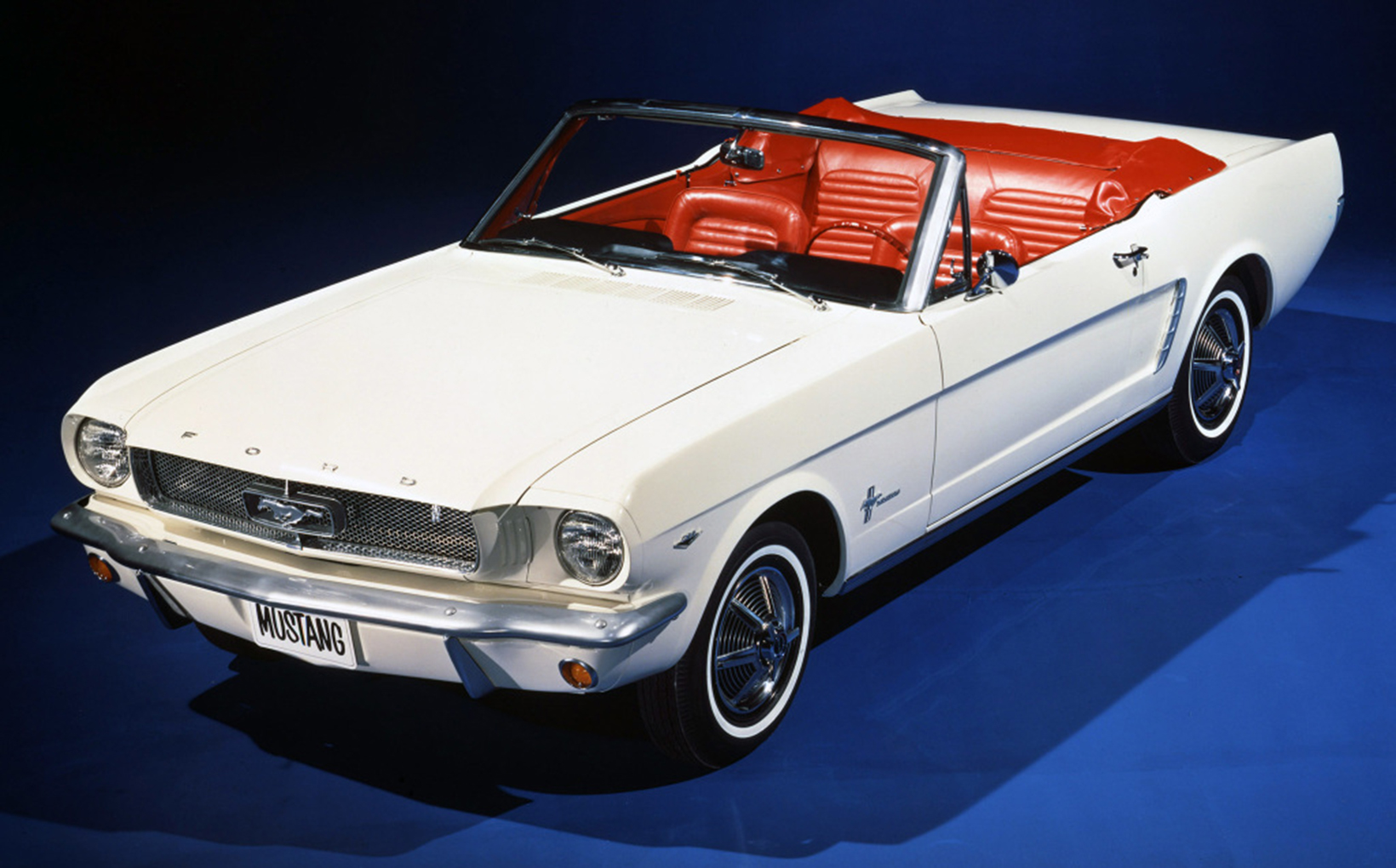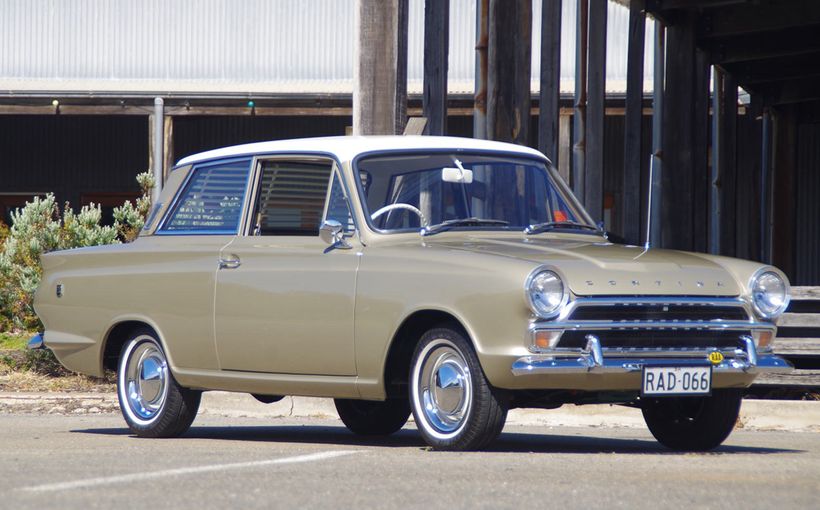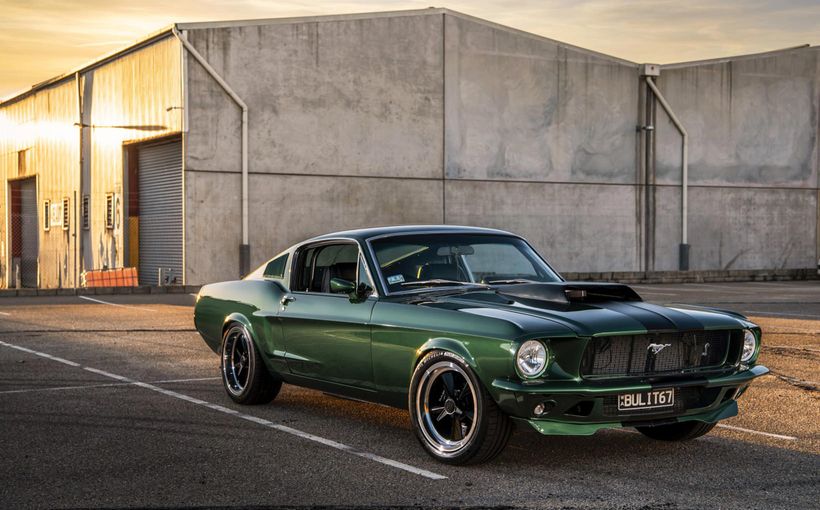Mustang: How Ford started a 'Pony Car' stampede!

If one was to produce a step-by-step manual on how to research, design and promote a new car that would hit its market with the accuracy and impact of a guided missile, Ford’s immortal Mustang would provide peerless content.
Launched on April 17, 1964, it found more than 120,000 buyers in its first four months, set a new post-war industry record of 418, 812 sales in its first 12 months and surpassed one million sales in fewer than 24 months. The Mustang also invented a new ‘pony car’ market segment which attracted numerous imitators from Detroit.
Under the inspirational leadership of Ford Division’s boss, Lee Iacocca, it was the marque’s most successful new model launch since the sales phenomenon of the Model A in the 1920s. And unlike its famous ancestor, it has remained in continuous production for almost six decades.

All images: Ford
Market research
At the start of the 1960s, Ford’s market research was sharply focused on emerging social and economic trends which served as the catalyst for development of the Mustang.
As a result of the post-WW2 ‘baby boom’ millions of young Americans were in their teens and soon to become car buyers. Ford’s research pinpointed the 18-34 age group as representing more than 50 per cent of the boost in new car sales projected for the coming decade.
They were also going to be better educated buyers, as more than three million students were enrolled in colleges in 1960 and that number was expected to double by the end of the decade. This was significant because Ford’s research showed that new cars were purchased at much higher rates by college-educated people.
Post-war immigration from Europe in the 1950s also brought new trends in food, fashion and culture, exotic movie-screen beauties like Sophia Loren and Bridgette Bardot and revered marques like Ferrari with its ‘Superamerica’ and evocative Grand Prix/Le Mans heritage.

Fun and affordable two-seater British sports cars with their low seating positions, long bonnets, short boots, open tops, bucket seats and floor-shifts, were also popular imports in the 1950s. And by 1960 the Chevrolet Corvette was firmly established as America’s own sports car.
So, it was from this swirling cocktail of sporty influence that young Americans had developed clear opinions about automotive style and performance for the 1960s. And they were in stark contrast to their parents.
“For example, 36 per cent of all persons under 25 liked the ‘four-on-the-floor’ feature – the floor shift. But among those over 25, only nine per cent wanted to shift gears. Bucket seats were a favourite feature among 35 per cent of the young people, as against 13 per cent in the older group,” observed author Martyn L. Schoor in Ford Mustang: The Car That Started The Pony Car Revolution.
“Other design preferences expressed by young people included the sound of a high-performance engine and the feeling of being close to the road. Youth, in sum, was casting a ballot for a car with sporty flair.”

Ford’s research also identified a growing trend of multiple car ownership within families and correctly forecast that, with increasing incomes and affluence, this trend would see exponential growth in the 1960s.
Its research also highlighted the growing influence of women in choosing that second car, which they wanted to be small and agile, easy to handle and park, have seating for four with a decent-sized boot. And, just as importantly, it had to be stylish and attractive.
Chevrolet’s rear-engine Corvair launched in 1960 appeared to meet those requirements, particularly with the introduction of the Monza Club Coupe which found its niche as an affordable sporty car with six-cylinder economy, bucket seats, floor-shift and luxury appointments. Its popularity helped Corvair sales top 316,000 in 1961.

By comparison, Ford’s 1960 line-up included a new economical and low-priced six-cylinder compact sedan called the Falcon. Offering 30mpg (7.8L/100km) fuel economy, seating for up to six and useful luggage space, it was more conservative and conventional in design without any pretence of sportiness.
However, the Falcon enjoyed much greater showroom success, with combined sales from 1960-61 topping 909,000 units compared to the Corvair’s 566,000.
So, by 1961 Ford had rightly concluded that a restyled and sporty version of the Falcon, with an exceptionally attractive personality and unexpectedly low price, would not only crush the Corvair but also eclipse Falcon sales in exploiting a new youth-driven market that was ripe for a bumper harvest.

Design
The Falcon had considerable influence on the Mustang’s design, not only in the closeness of their key dimensions but also in sharing as many chassis and drivetrain components as possible to ensure it hit the crucial low-price target.
It was even called the ‘Special Falcon’ during early planning before the Mustang name was chosen. It was inspired by America’s wild untamed horse from Spanish bloodlines, with its thick mane dancing in the wind and tail held high, thundering across the American plains. Mustang evoked speed and freedom. It was the perfect choice.
Falcon and Corvair influenced the Mustang’s key design parameters established by late 1961; it was not to exceed 180 inches (4572mm) in length, not weigh more than 2500 pounds (1134kg) and its entry price had to be less than USD$2500 ($25,000 today). The standard engine was to be a six-cylinder with optional V8 and auto transmission.

In 1962, Ford Motor Company’s three design studios comprising Ford Division, Lincoln-Mercury and Corporate Projects, competed to create the winning design. The Ford Division’s design was chosen, with plant assembly of the first production unit scheduled for March 9, 1964 – a scant 18 months later!
Its 108-inch (2743mm) wheelbase was only 38mm shorter than the Falcon and its 182-inch (4613mm) length was virtually identical, yet it was also 46mm narrower and a substantial 81mm lower. The pony car driving experience would be cosseting and intimate.
Its stunning long bonnet/short boot proportions, available in hardtop coupe and convertible, were overtly sporty yet elegant and it could accommodate four adults and luggage. In Ford speak, Mustang was “demure enough for church-going, racy enough for the dragstrip and modish enough for the country club.”

Spectacular Launch
On February 7, 1964 the press was officially advised of the Mustang’s impending arrival and on March 9, bang on schedule, the first production Mustang went down the assembly line at Ford’s Dearborn plant.
In the following 30 days, more than 9,000 more were produced in Dearborn and within months assembly would expand to plants in San Jose, California and Metuchen, New Jersey to meet overwhelming demand.
The public launch was set for April 17, 1964 when the Mustang took centre stage in the Ford Pavilion at the World’s Fair in New York, with the company’s top brass present including Henry Ford II.
But that appearance was only part of a nationwide media blitz across print and television, that generated so much excitement and anticipation it sent American buyers into a frenzy.

The press had a special viewing of the Mustang in the Ford Pavilion four days before its public reveal. More than 100 journalists were then issued with route instructions and paired-off in Mustangs for a 1200km drive from New York to Detroit, after which they were generous in their praise in numerous written reports.
On the evening of April 16, the day before its official New York reveal, Ford-sponsored commercials were broadcast simultaneously across the nation’s three major TV networks, with the new Mustang appearing in the living rooms of around 30 million homes.
The following day, full-page advertisements announcing Ford’s new ‘pony car’ appeared in more than 2,600 daily newspapers in 2,200 markets. The Mustang also appeared simultaneously on the covers of Time and Newsweek as part of editorial spreads featured in 24 of the nation’s most popular magazines.

Ray Miller: “With all of these promotional efforts, the morning of April 17 found the dealers’ showrooms were jammed with visitors; over 4,000,000 people visited the showrooms that weekend; over 22,000 cars were ordered; 15 buyers competed for one car with the successful bidder refusing to leave his car for fear that it would be sold out from under him.
“A truck was reportedly driven into a showroom when the driver was distracted by the crowds; a car was marooned on a wash rack by a sea of visitors; a showroom was padlocked when the press of incoming crowds threatened a stampede. On and on went the reports, each of them adding to the Mustang’s publicity.
“Other promotional projects followed. Mustangs were displayed at major airport terminals and high-traffic big city locations. Some 100 Holiday Inns gained mutual publicity when they displayed new Mustangs near their registration desks.
“(And) in an unusual appeal to the woman of the family, Ford took ads in the women’s pages of almost 100 major cities’ newspapers to announce that for the first time in its 125-year history, Tiffany had given a design award for a commercial product, the Mustang.”

Clearly, the Mustang appealed to more Americans than just young college graduates. With prices starting at an irresistible USD$2368 (only $22,672 today), even the base Mustang with 170cid six offered generous standard features for its time including front bucket seats, ‘sports car’ steering wheel, floor-mounted shift lever, carpets, heater/demister, lighter/ashtray, full wheel-covers and much more.
However, Mustangs rarely sold for their base price, given Ford’s huge range of options backed by seductive messaging that it was “the car that was designed to be designed by you.” 85 per cent were sold with whitewall tyres, 80 per cent with radios, more than 70 per cent with one of three optional V8 engines (260cid/289cid/289cid High-Performance), 50 per cent with automatic transmissions and so on.
Annual Mustang production reached a dizzying peak of more than 600,000 units in 1966, before steadily declining with each new model year.
This was due to a variety of factors including changing buyer tastes, increased competition from rival brands, punitive increases in insurance premiums and increasingly tough federal road safety and anti-smog mandates. By 1973, the Mustang had also drifted a long way from the original concept, having gained some 300mm in length and more than 270kg on the scales!

Back to the future
Lee Iacocca became president of the Ford Motor Company in 1970. One of his first tasks was to approve development of a second generation of Mustang for 1974, with downsized dimensions more in keeping with his 1964 original.
The Mustang II was launched in September 1973 only two months before conflict in the Middle East triggered the world’s first oil crisis. Iacocca’s timing could not have been better as his smaller and more fuel-efficient Mustang led a decade of downsizing across the industry, with the largest engine available being a 302cid (4.9-litre) V8.
Ford launched its third generation Mustang in 1979 based on the ‘Fox’ chassis platform which was larger in wheelbase and other key dimensions. Available in numerous trim levels across three body styles, which included the return of a convertible, it had a mid-life facelift during a long 14-year production run. It also offered a variety of engines, with the largest still the venerable 302 V8.

1994 brought a fourth generation, with fresh styling that embraced styling cues from earlier models and a new 4.6-litre SOHC modular V8 with power outputs climbing to 290kW in the hot Cobra versions. There was also a major facelift in 1999 featuring Ford’s ‘New Edge’ design.
A decade later came the fifth generation, built on a new platform with aggressive ‘retro-futurism’ styling inspired by the iconic late-1960s fastback models. During its decade in production from 2005 to 2014, the fifth-gen Mustang also raised the performance benchmark with the introduction of Ford’s new 5.0-litre 32-valve DOHC ‘Coyote’ aluminium V8.

The wider and lower sixth generation in 2015 featured a stunning evolution of the Mustang’s retro-futurism styling plus a new IRS and return of the iconic Mach 1. It was also the first to be designed as a RHD export model, which has proven to be very popular in Australia.
The seventh-gen Mustang is due for release in 2023. The fact that it has remained in continuous production since 1964 is a testament to how fundamentally ‘right’ the concept was from the start and how cleverly Ford has managed to keep it relevant and desirable for almost six decades. In 2018 its total production surpassed 10 million units. It is, by any measure, a quintessential Super Model.









